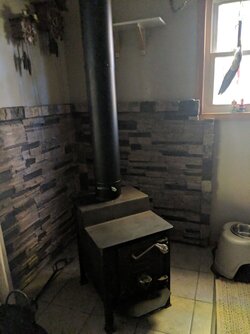I acquired an old Vestal model 1710 wood stove this past October and find it difficult to maintain a hot fire without having the door ajar. I'm considering getting a rack to keep the wood a bit off the bottom and ashes and promote better air flow. Anyone have some advice as to whether or not this would work?



